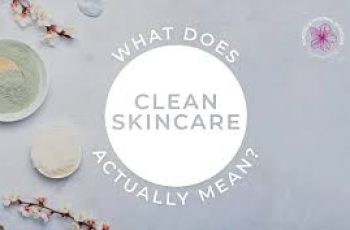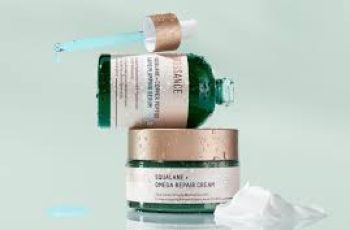Lip Balm with SPF
The lips are a very common area to develop skin cancer, so finding the best lip balm with SPF that does not taste bad is important to protect your lips from the sun. Tinted lip balms with SPF are a great way to give your lips daily sun protection and hydration. For men, a hydrating lip balm that won’t give you a “chapstick addiction” is the way to go. I am a dermatologist in Miami and we need to protect our lips every day of the year here. I will discuss which lip balms and lipsticks with sunscreen I recommend to my patients.
Lip Balms with Sunscreen
There are a few things to consider when shopping for lip balms with SPF. Do you want color (tinted) or a clear (untinted) lip balm? Do you want a lipstick or a lip gloss? And do you want a chemical SPF or a mineral (physical) sunscreen? This blog will guide you on how to find the best way to protect your lips from the sun whether its for every day, a day at the beach, or while skiing. Waterproof SPF for the lips is best if you are surfing or swimming.
Tinted Lip Balm with SPF
I explain to my patients that we tend to ingest a lot of our lip balm, so I prefer mineral lip balms with as many natural ingredients as possible. In my opinion, the best tinted lip balms with SPF are by Pavise. They use since and a diamond core technology to give good broad spectrum p protection. I personally use these and I like them because they stay on, do not tase bad, have nice colors, and give me good sun protection for my lips. These Pavise tinted lip balms with SPF come in 3 colors.
The Best Tinted Lip Balms with SPF
This vegan SPF lip balm has broad spectrum coverage to protect your lips when you plan to be in the direct sun for over 15 minutes. It comes in sheer and in various tints.
Pavise Lip Defense is a new marine safe tinted lip balm with SPF 30. It is all mineral sunscreen, so it is safe in pregnancy and while breastfeeding. It is also vegan. It may be too shiny for men, but for women the colors are beautiful. There are 3 colors to choose from. If you have a history of allergic reactions to sunscreen lip balms- you will most likely be ok using this because it used iron oxide pigments, not carmine, red dyes, and other ingredients that cause allergic reactions. I have very sensitive skin and I have no problems wit this SPF lip oil.
[[CX04]]
Lip Gloss with SPF
This Colorescience Lip Shine lip gloss has sunscreen of SPF35. It also has antiaging ingredients such as peptides and hyaluronic acid to help keep lips from wrinkling. It does not have chemical sunscreens and uses zinc oxide and iron oxides to give lips protection from the sun. It comes in clear and several colors. Note that some of the pink and red colors may contain carmine which can cause an allergic reaction in sensitive skin types.
Untinted Lip Balms with SPF
If you do not want a l color in your lip SPF, you can use a colorless lip sunscreen. The problem with many lip sunscreens is that they have a bad taste. Here are some colorless lip sunscreens that my patients and I like.
This SPF 15 lip balm with sunscreen has avocado oil and carrot seed oil which have antioxidants to help protect the lips from sun exposure. It comes in sheer and in other colors.
Tizo Tinted Lip SPF 45 is reef friendly lip sunscreen that is also water resistant. It has a light color added so it will not look white on the lips. Note that is preservative-free but contains aluminum. It is in a stick form which makes it easy to carry i your pocket. It does not degrade with sun exposure like many chemical sunscreens do.
Untinted Lip Balms with SPF for Men
If you need sun protection for the lips for golf, skiing, and other outdoor sports and you do not wan t it to have color or be too shiny, then a lip sunscreen is a good choice. These are the lip sunscreens that my male patients prefer.
For other skincare tips for men- check out this blog.
Elta MD makes a SPF 36 water resistant broad spectrum lip sunscreen with octinoxate and zinc oxide. It has a white cast to it. It is an effective way to protect your lips in dry weather because it also has hydrating humectants.
Looking for skincare products? Take our skin type quiz to find out which Baumann Skin Type you are and get product recommendations based on your skin type.
DQH Can I use salicylic acid first and then vitamin C?
It’s easy to create a skincare routine, but knowing how to use it is another thing entirely. In most cases, if you’re not getting the desired skin results, it could be due to the layering of conflicting ingredients. So, is it possible that salicylic acid and vitamin C are such ingredients? Or are these active ingredients the duo that’s been missing from your skincare routine? If you want answers, stick around because today we are going to explain the benefits of salicylic acid and vitamin C and how they can be used in your daily life.
What are the benefits of salicylic acid for skin?
Salicylic acid is one of the most commonly used beta hydroxy acids and is favored by many people with oily, acne-prone skin. This acid is derived from willow bark, and unlike its water-soluble relatives (called alpha-hydroxy acids), salicylic acid is oil-soluble, which means it can penetrate deeper into the lower layers of the skin. Once it reaches the lower layers, it can help unclog pores of excess sebum, dirt, bacteria, debris, and impurities. This results in clearer skin tones and greater definition.
Not only does salicylic acid benefit the underlying layers, but the outer surface of the skin benefits as well. When applied to the skin, salicylic acid removes the buildup of dead skin cells. This is accomplished by breaking the bonds that hold dead cells to the surface. Over time, this can cause the complexion to look dull and prone to acne, blackheads, and other blemishes.
If you’d like to learn more about salicylic acid and how it can improve your skin, check out this dedicated blog post from a beauty insider.
What are the benefits of vitamin C for skin?
Vitamin C is considered one of the most powerful antioxidants, which means it is very effective at fighting free radicals and preventing them from causing further skin damage. Examples of free radicals include pollution, central heating, UV rays and harsh climate. They attack proteins, fats and cell membranes as soon as they come into contact with the skin, causing signs of premature aging such as fine lines and wrinkles as well as hyperpigmentation, flaky patches of skin and loss of elasticity.
Many people usually prefer to use vitamin C in their morning routine as this ingredient gives the complexion a radiant glow. You’ll also find that vitamin C can target areas of hyperpigmentation, plumping the skin and reducing the appearance of fine lines and wrinkles.
The thing about vitamin C is that there are a lot of outdated studies going back to the 1950s that describe vitamin C as an unstable skin component. Thanks to improvements in modern technology, this is no longer the case as all products now contain a stable form of vitamin C.
Visit The Beauty Insider to learn more about vitamin C. So please check out our blog post.
Can I use salicylic acid first and then vitamin C?
Yes, you absolutely can. In fact, it’s thought that using salicylic acid before using vitamin C ensures it penetrates faster and works faster.
This is an efficient way to utilize two power sources, and the reason has to do with pH. For example, the skin’s natural pH is about 4.7, making it slightly acidic. Salicylic acid and vitamin C are also both acidic, and you’ll find that vitamin C is absorbed quickly into the skin. Therefore, using salicylic acid beforehand can increase the acidity of the skin and allow vitamin C to penetrate into the skin faster.
While this is considered an effective way to combine two powerful ingredients, you need to be aware of your skin type and how it reacts to certain active ingredients. Even people with perfect, normal skin can experience skin sensitivity and irritation. Therefore, always consult a doctor or dermatologist before using any new products on your skin.
It’s also important to follow skin application rules. In this case, you need to use the product correctly to ensure you get the best results for your skin. If you’re not sure what I mean, the basic rule for skin is to start with the thinnest consistency and work your way up to the thickest consistency. This prevents a barrier from forming on the surface, preventing other active ingredients from penetrating the skin.
Can I use salicylic acid at night and vitamin C in the morning?
Yes, absolutely, this is considered the most effective way to get returns without any adverse side effects. This is because there is enough time between applications to ensure that the skin’s pH levels return to balance.
You’ll also find that Vitamin C is rich in antioxidants and is perfect for use in the morning to ensure your skin is protected and looking its healthiest. Due to the small size of salicylic acid molecules, it is an acid that is able to reach the deepest parts of the skin. While this is effective at keeping skin clear, it also increases the risk of irritation and photosensitivity. Therefore, many people prefer to use powerful BHAs in their evening routine without exposure to UV rays, pollution, or harsh weather.
Warning: If you avoid using sunscreen every day, none of these ingredients will do what your skin needs. The combination of chemical peels and powerful ingredients increases the risk of further damage to the skin’s surface. Use SPF 50 every day to keep your skin protected and your lipid barrier healthy, even on cloudy days, keeping your skin in top condition.



